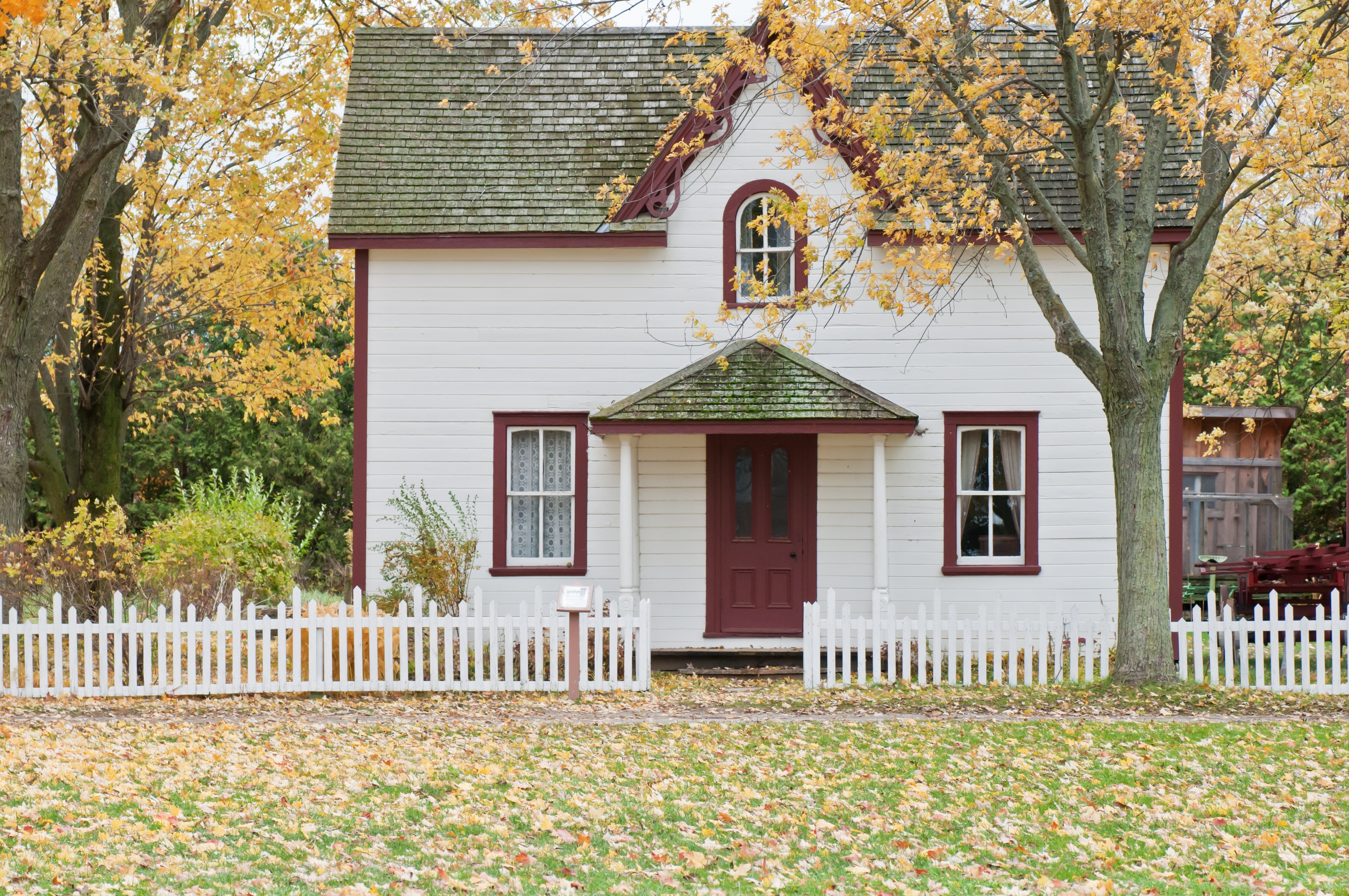
When it comes to securing a loan against the equity you’ve built up in your home, there are two main options: a HELOC or a second mortgage. Both have their own unique benefits and drawbacks, and which one is right for you will depend on your specific circumstances. In this blog post, we’ll take a look at each option in more detail, compare them side-by-side, and help you decide which one is best for you.
Before we compare the two, let’s go through a brief summary of each:
Table of Contents
What Is a HELOC?
A HELOC, or Home Equity Line of Credit, is a type of loan that allows you to borrow against the equity in your home. The amount you can borrow will depend on the value of your home and the equity you’ve built up, but it will typically be a smaller amount than what you could get with a second mortgage.
On the plus side, HELOCs tend to have lower interest rates than other types of loans, and they’re also more flexible in terms of how you can use the money.
What Is a Second Mortgage?
A second mortgage is a type of loan that allows you to borrow against the equity in your home, but it’s typically for a larger amount than what you could get with a HELOC. The interest rate on a second mortgage will also be higher than what you could get with a HELOC.
However, the money from a second mortgage can be used for any purpose, and it can sometimes be easier to qualify for than other types of loans.
Now that we’ve gone over the basics of each option, let’s compare them side-by-side:
Advantages of a HELOC
- Lower interest rates.
- More flexible in terms of how you can use the money.
- Easier to qualify for.
- Line of credit.
Disadvantages of a HELOC
- Have shorter repayment terms.
- The interest rate is variable, which means it could go up over time.
- You may be required to make interest-only payments for a certain period of time.
- Need to have equity in your home to qualify.
Advantages of a Second Mortgage
- Can be used for any purpose.
- Can sometimes be easier to qualify for than other types of loans.
- You can borrow a larger amount of money with a second mortgage than with a HELOC.
- You may be able to get a tax deduction for the interest you pay on the loan.
Disadvantages of a Second Mortgage
- Second mortgages typically have higher interest rates.
- The payments may be due more often than with a HELOC.
- You may be required to get private mortgage insurance (PMI).
- Second mortgages can be foreclosed if you don’t make payments.
How to Choose the Right One for You
HELOCs tend to be better for smaller loans that you may need for a specific purpose, such as home renovations or a new car. Second mortgages are generally better for larger loans that you may need for a variety of purposes, such as consolidating debt or paying for a child’s education.
A HELOC is a line of credit, whereas a second mortgage is a one-time lump sum loan. If you know how much you need to borrow, a second mortgage may be the better option. But if you’re not sure how much you’ll need or when you’ll need it, a HELOC may be a better choice. For further clarification on the difference between loans and lines of credit, read this article.
It’s also important to consider the interest rates and repayment terms when deciding which option is right for you. HELOCs typically have lower interest rates and more flexible repayment terms, while second mortgages generally have higher interest rates but offer a fixed repayment schedule.
As always, it’s important to shop around and compare rates from different lenders before you make a decision. If you’re not sure which option is right for you, the best thing to do is speak to a qualified mortgage professional who can help you assess your situation and make the best decision for your needs.
Examples of When it Would be Better to Get a HELOC
As with any loan, there are risks to consider. However, if you understand your situation well, it can be a helpful financial tool. Here are two examples of when HELOCs could be a good idea and two situations of when HELOCs can be helpful:
You need money for a short-term expense: HELOCs typically have shorter repayment terms than other loans, which can be helpful if you need money for a short-term immediate payment.
You have significant equity in your home: If you’ve built up a lot of equity in your home, you may be able to get a HELOC with a lower interest rate than other types of loans.
Situation #1: Mrs. Heloc had $50,000 left on her first mortgage. Her home was valued at $500,000. She wanted to buy a second property as a rental but was not sure of the exact costs as renovations were needed. The down payment was $40,000 and the complete cost of renovations wouldn’t be known until a few weeks later.
The property was in a great area and the real-estate market was competitive. Mrs. Heloc did not want to miss out on this opportunity.
She did not want to take out more debt than she needed so she decided on a HELOC for $40,000 just to secure the ownership before someone else did. This allowed her to access the money as she needed it and only pay interest on what she borrowed. She found out that the renovations would only be $5000 and she could borrow that amount over time as she needed it.
Situation #2: You’ve paid down 80% of your mortgage and have $400,000 built up in equity. You come home after a vacation to see a water leak and a flooded basement. Unfortunately, you forgot to read the fine print and your home insurance does not cover this.
You talk to a professional and have been quoted about $10,000-$12,000 for repairs. He can’t give an exact number because he needs to start before he can see the complete extent of the damage. You spent all of your extra cash while on the vacation and won’t be paid again for another two weeks.
You go to the gym with a friend to get your mind off this problem and he mentions how he is now renting out his basement for extra income. You realize that this could be an opportunity to turn a bad situation into a profitable source of income. The rent you can charge can help pay down the interest rate of the loan to both repair and renovate.
As soon as you come back to your damp home, you call your contractor and tell him your idea. He likes the idea but can’t give an exact quote because he needs to repair the leak first.
You decide to take out a HELOC and start with $10,000 to begin repairing the water damage. It will take about 4 weeks so you begin paying the interest by working overtime. As it turns out, he did not need any more than $10,000 to fix the damage.
He then quotes you for $15,000 for a complete renovation that will be able to yield $2500 per month with brand new appliances, walls, floors, and fixtures.
You decide to take out more debt through the HELOC and within 8 weeks, your basement is finished and you are already renting it out. If it weren’t for the HELOC, you would not have been able to access the funds quickly to take advantage of this opportunity.
Your HELOC has a variable rate so when rates go down in the future, your monthly payment will as well. You make plans to pay off the HELOC as quickly as possible by making extra payments each month. As planned the $2500 per month from rental income would help pay down the interest and some of the principles. You pay down the principal by paying down $3000 per month with the help of overtime hours.
In less than a year, the $25,000 HELOC debt is paid off and you own an asset that pays you $2500 per month. After months of overtime, you decide to become semi-retired as the passive income from your tenant pays off the rest of your home’s mortgage. After a few years, your home mortgage is completely paid off and you become financially free with $2500 per month to spend as you wish.
HELOCs can be a great way to access the equity in your home to make improvements that can increase the value of your home while also providing a source of income.
Examples of When it Would be Better to Get a Second Mortgage
If you identify with any of the following situations, then a second mortgage might be the better option.
You know exactly how much you need: A HELOC is great if you’re not sure how much you need or if the cost of the project might change. But, if you know that you need a set amount and nothing more, then a second mortgage might be the best option.
You need the interest rate to remain fixed: HELOCs have variable interest rates which means that your monthly payment could change if rates go up. If you’re worried about this, then a fixed-rate second mortgage might be the best option for you.
You want to avoid the HELOC repayment period: HELOCs typically have a “draw period” where you can borrow the money and make interest-only payments. After this period, you have to start repaying both the principal and interest. If you want to avoid this, then a second mortgage might be the better option.
You have bad credit: HELOCs often require good credit to qualify. If you have bad credit, then a second mortgage might be the better option as they often have less strict credit requirements.
Situation #1: Mort Gage wanted to consolidate his debt. After a few missed credit card payments, his credit score has dropped to just under average. The cost to completely get rid of his 20% credit card debt is $10,000.
After speaking to the mortgage professionals, he found out that the interest rate was only going to be 12%. In this scenario, it would be better to get a second mortgage for the $10,000 he needed. This is because HELOCs have variable interest rates that could rise and make their debt more difficult to pay off.
Situation #2: You are wanting to do a large home renovation project that will cost $30,000. You only have $5000 in savings and the rest you will need to finance. You are self-aware and know that you can often go over your budget. In this case, it would be better to get a second mortgage for the entire amount so that you are not tempted to overspend.
A second mortgage would be better because HELOCs are revolving lines of credit which means that you could be tempted to spend more money than you originally planned on your project.
You have no plans on moving shortly and are comfortable making monthly payments. You have good credit and can qualify for a low-interest rate. You want the stability of a fixed monthly payment.
When HELOC rates rise, your monthly payments will as well which could make it difficult to pay off your debt. A second mortgage would be a better option in this case because you would have a fixed monthly payment.
If you’re trying to decide between a HELOC and a second mortgage, it’s important to consider your individual needs and situation. Each option can have its own advantages and disadvantages, so it’s important to speak to a qualified mortgage professional to help you make the best decision for your needs.
Frequently Asked Questions about HELOCs and Second Mortgages
Q: Are HELOCs and second mortgages the same thing?
A: HELOCs and second mortgages are both types of home equity loans. However, a HELOC is a line of credit while a second mortgage is a lump sum loan.
HELOCs and second mortgages are two different types of loans. HELOCs tend to have lower interest rates and be more flexible in terms of how you can use the money, while second mortgages typically have higher interest rates but can be used for any purpose.
Q: How do I qualify for a HELOC or second mortgage?
A: To qualify for either type of loan, you’ll need to have equity in your home. Equity is the portion of your home’s value that you own outright, and it can be used as collateral for a loan. In general, the more equity you have, the easier it will be to qualify for a loan.
Q: What are the interest rates for HELOCs and second mortgages?
A: HELOC interest rates can vary, but they are typically lower than second mortgage rates. HELOCs usually have adjustable rates, which means that the interest rate can change over time. Second mortgage interest rates are typically fixed, meaning the rate will stay the same for the life of the loan.
Q: How much can I borrow with a HELOC or second mortgage?
A: The amount you can borrow with a HELOC or second mortgage depends on the equity you have in your home. In general, you can borrow up to 80% of your home’s value, minus any outstanding mortgage debt.
Q: How long do I have to repay a HELOC or second mortgage?
A: HELOCs typically have a repayment period of between five and 20 years. Second mortgages typically have a repayment period of 15 to 30 years.
Q: What are the fees for HELOCs and second mortgages?
A: HELOCs and second mortgages typically have similar fees, including origination fees, appraisal fees, and closing costs. HELOCs may also have annual or monthly maintenance fees.
HELOC vs Second Mortgage: Which is Right for You? (Conclusion)
So, which is right for you? If you’re looking for a lower interest rate and more flexibility in how you use the money, then a HELOC may be the better option.
However, if you need a larger loan amount or you don’t have equity in your home, then a second mortgage may be a better fit. Ultimately, the best way to decide is to speak with a loan officer and compare your options.
HELOCs and second mortgages are two different types of loans that can be used for a variety of purposes. Each option has its own advantages and disadvantages, so it’s important to speak to a qualified mortgage professional to help you make the best decision for your needs.
If you’re interested in learning more about HELOCs and second mortgages, be sure to check out our other blog posts on the topic. By exploring more information on this website, you will be able to make better personal finance decisions.



